-
Car Reviews
- All reviews
- Midsize SUVs
- Small cars
- Utes
- Small SUVs
- Large SUVs
- Large cars
- Sports SUVs
- Sports cars
- Vans
Latest reviews
- Car News
-
Car Comparisons
Latest comparisons
- Chasing Deals
Isuzu claims its mid-tier X-Rider version of its popular D-Max range is “the ultimate all-rounder”, but does it fit the bill in the real world?
Those new to the ute world might be a bit conflicted at first. Do they want something practical and built for work? Or do they want comfort and decent ride quality for around town? Or, to add to the problem, do they want something setup for towing and touring?
While Isuzu Ute Australia offers answer to those individual questions up and down its D-Max ute range, there a promise that the latest addition to the stable, the X-Rider variant, does it all. Or at least, this newcomer variant does a whole lot of stuff reasonably capably.
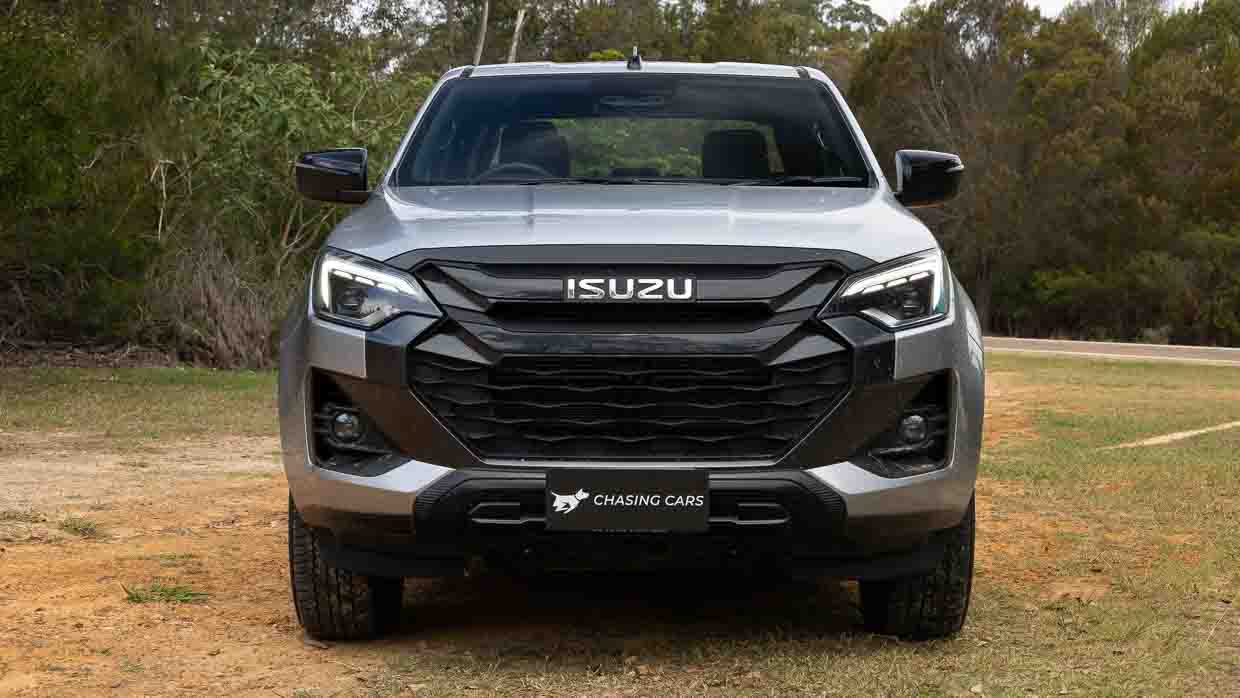
Based on the LS-M variant and sitting below the next-in-line LS-U, the X-Rider is almost right in centre of Isuzu’s D-Max family tree.
Isuzu Ute Australia states the X-Rider is “your new travel companion” and the “ultimate all-rounder for your adventures”. But how so?
We drove the X-Rider for a few hundred kilometres over a week both on and off road to find out how well rounded this ute really is.
The X-Rider currently starts at $59,500 before on-road costs, or just over $64,000 driveaway here in New South Wales. That puts the mid-range Isuzu ute in similar territory to the Nissan Navara Pro-4X and the related Mazda BT-50 GT.
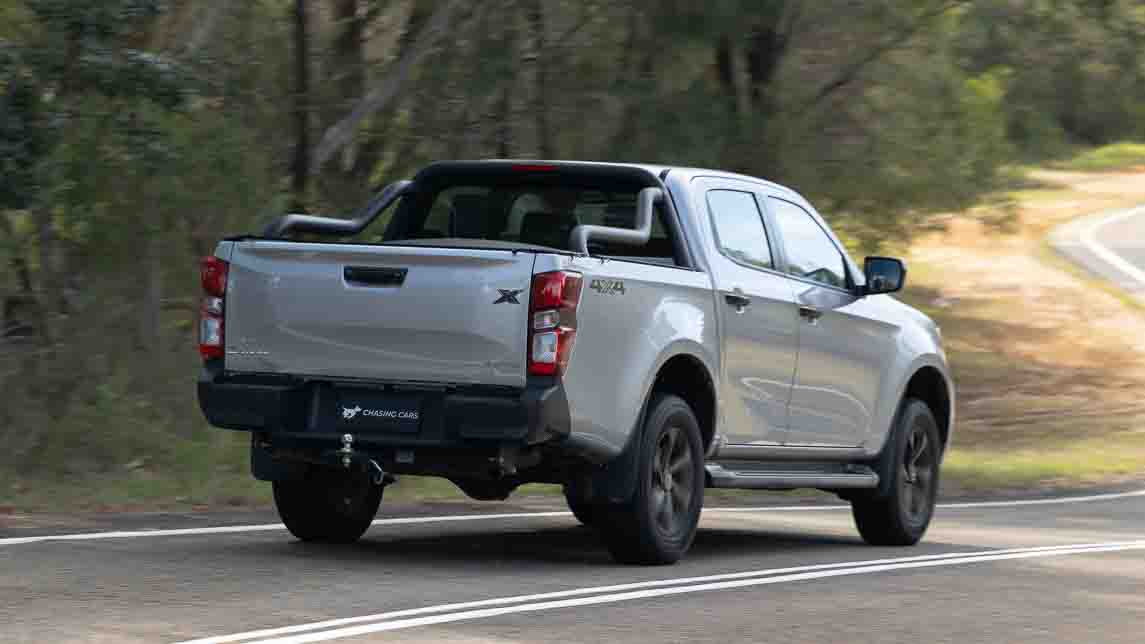
As standard, the X-Rider is fitted with the following features:
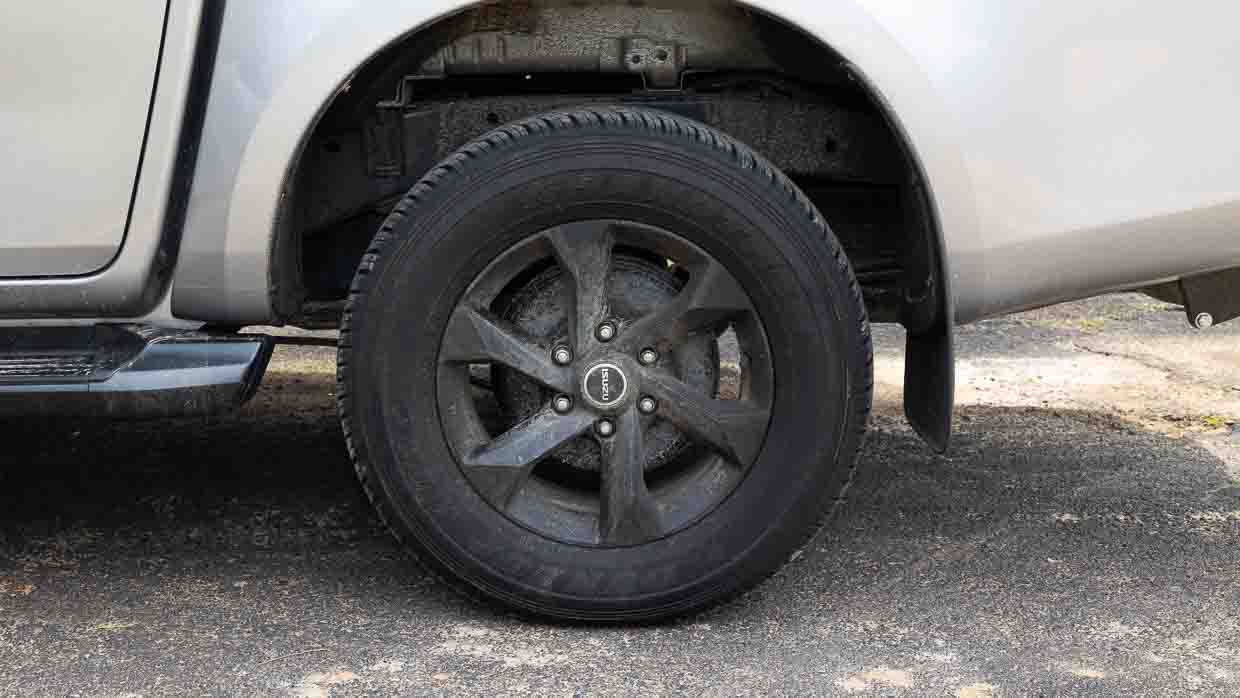
The X-Rider gains the following features over the LS-M in which it is based:
On this second list alone, there’s not a whole lot of extra capability the X-Rider adds over the LS-M on which it’s based. Instead, that ‘X factor’ appears mostly to be cosmetic and accessorised.
Further, the X-Rider misses out on some key features which are standard on other utes at this price point, such as keyless start, a leather-trimmed steering wheel and electric or heated front seats.
I’ve always felt the D-Max was a pretty good thing to drive, but what’s different for the LS-M-based X-Rider for 2024?
Well, the good news is that the venerable 3.0-litre turbo-diesel four-cylinder ‘4JJ3’ engine remains, but if you’re after a little more grunt, you may be left a touch disappointed.
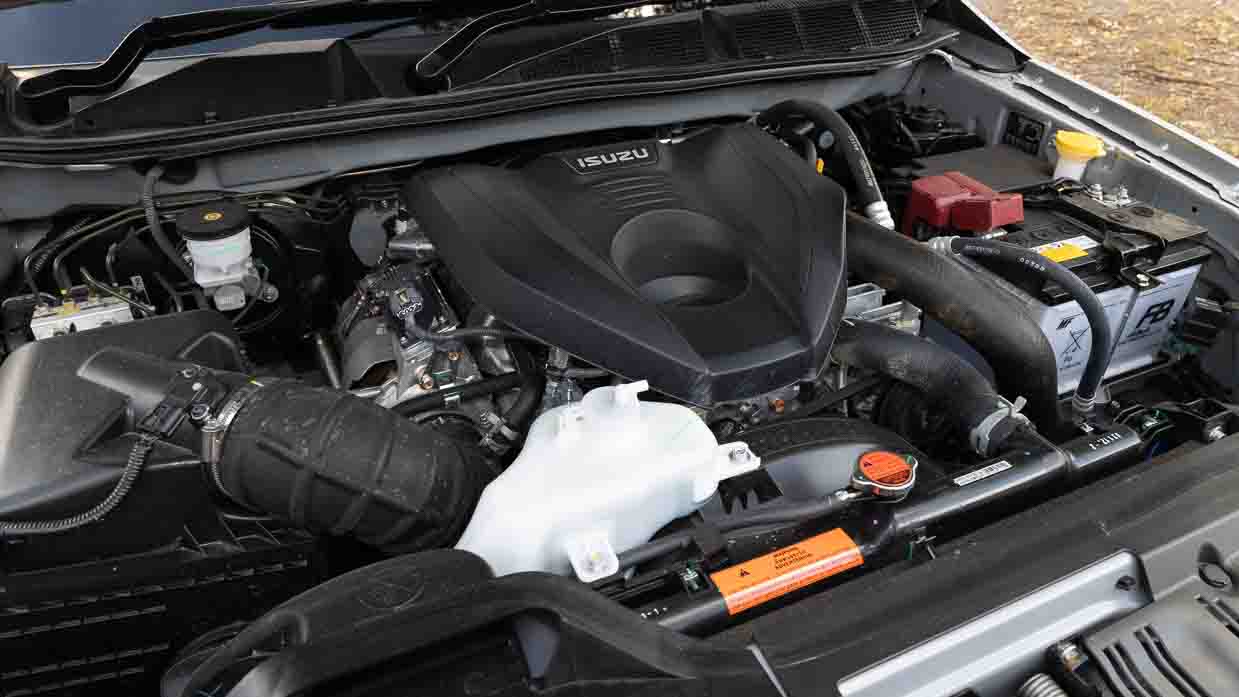
This engine continues to produce 140kW/450Nm and is paired to a six-speed torque-converter automatic transmission. That power is sent to a part-time four-wheel drive system that can also be put into either 4×4 high or 4×4 low – pretty standard kit for most utes in Australia.
Isuzu states it has improved the rear suspension of the LS-M and X-Rider variants, opting for a softer three-leaf sprung setup to improve unladen ride and handling. I must say, it has settled the ride pretty nicely.
You can definitely feel its more compliant rear end most around town, and of course when unladen. For many Aussies not using their D-Max as a load-lugging workhorse, this will be the preferred setup to get the kids to school or for the drive to work.
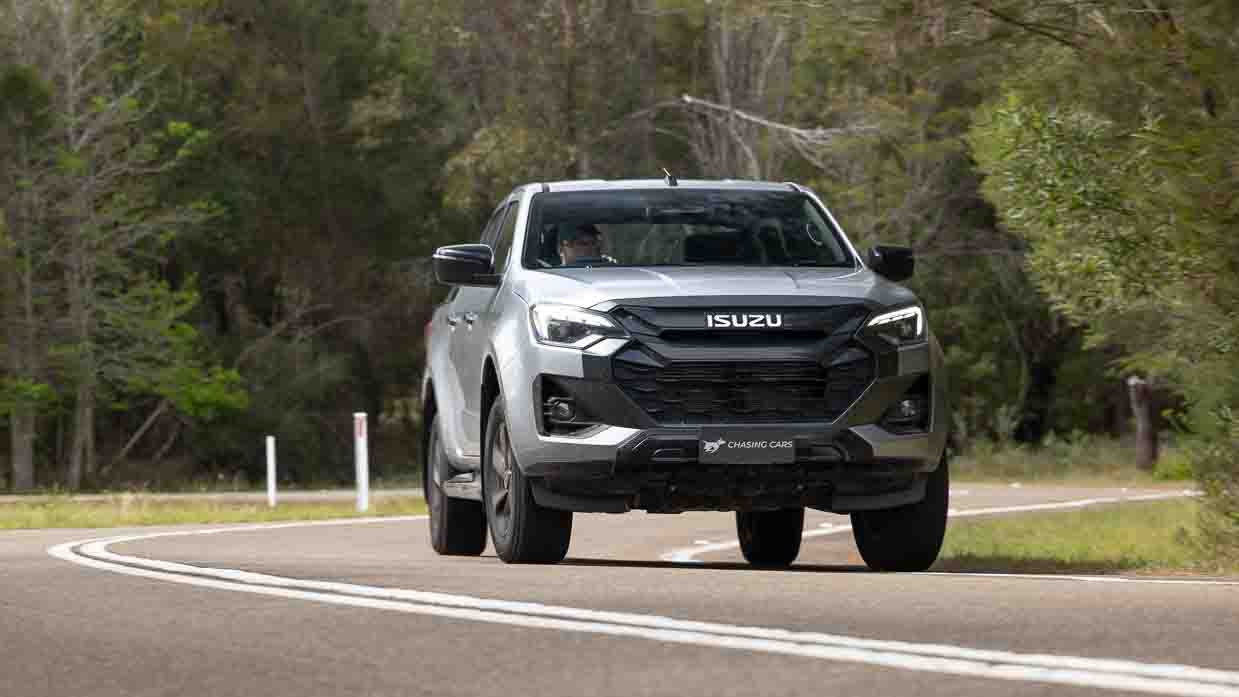
There seems to be a little less jitteriness to the rear end and some greater control, which I thought was well done. And while the D-Max is still some way off having car-like ride quality, this enhancement improves the ute’s lifestyle credentials.
The 4JJ3 3.0-litre engine remains a solid choice in our local market. It’s strong and has surprisingly good response, even though it’s only boosted by a single turbocharger. Isuzu uses a variable geometry turbo, or VGT, which is similar, if not the same tech that’s been featured in a Porsche 911 Turbo.
The lack of turbo hesitation or lag with this engine is therefore pretty commendable. The level of response from the engine is pretty much on par with Nissan’s twin-turbo 2.3-litre, or even Ford’s 2.0-litre bi-turbo engine found in the Ranger and the Volkswagen Amarok.
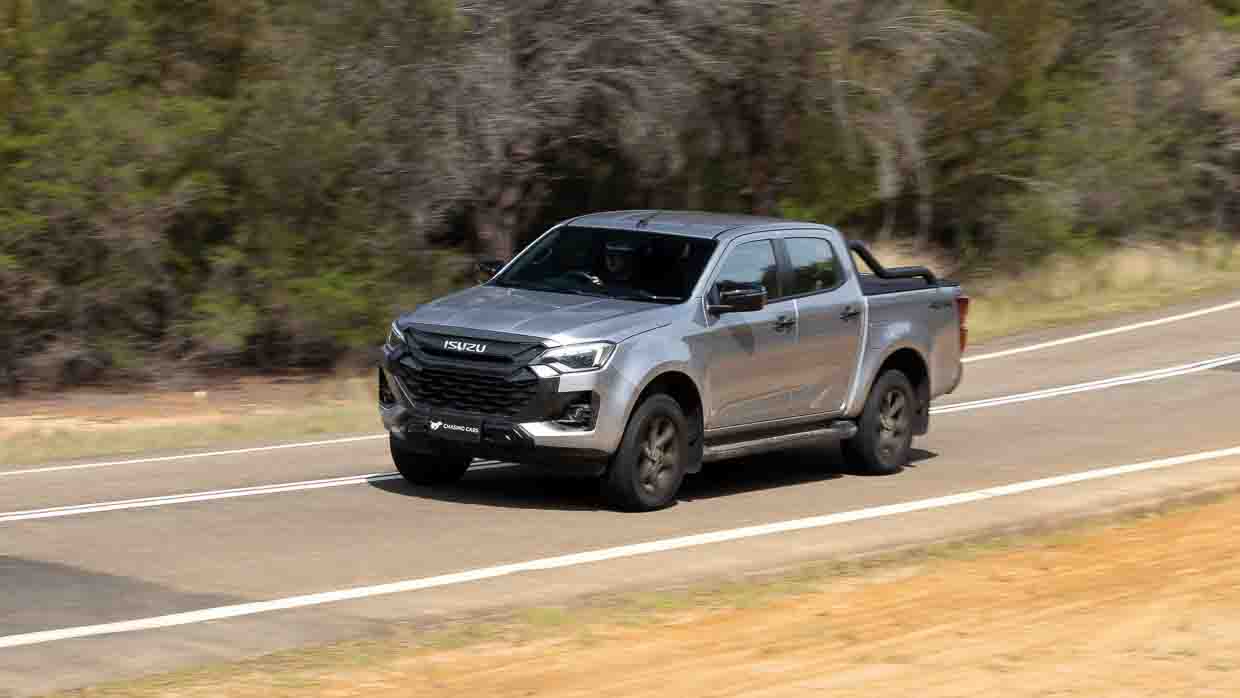
I was fortunate to be able to drive the 2024 X-Rider not just for day-to-day commuting, but also for long highway stints and, most importantly, on some tricky off-road tracks.
New Chasing Cars recruit and logistics coordinator Evan Spence took me out to his ‘backyard’, the off-road track in and around the Blue Mountains west of Sydney, to put the X-Rider through its paces. I came away from the experience well and truly impressed.
Not only did I not get stuck – a personal first – but using Isuzu’s rough terrain mode, along with low range, the X-Rider got me through some fairly gnarly sections of track in quite muddy conditions that I usually would never have attempted.
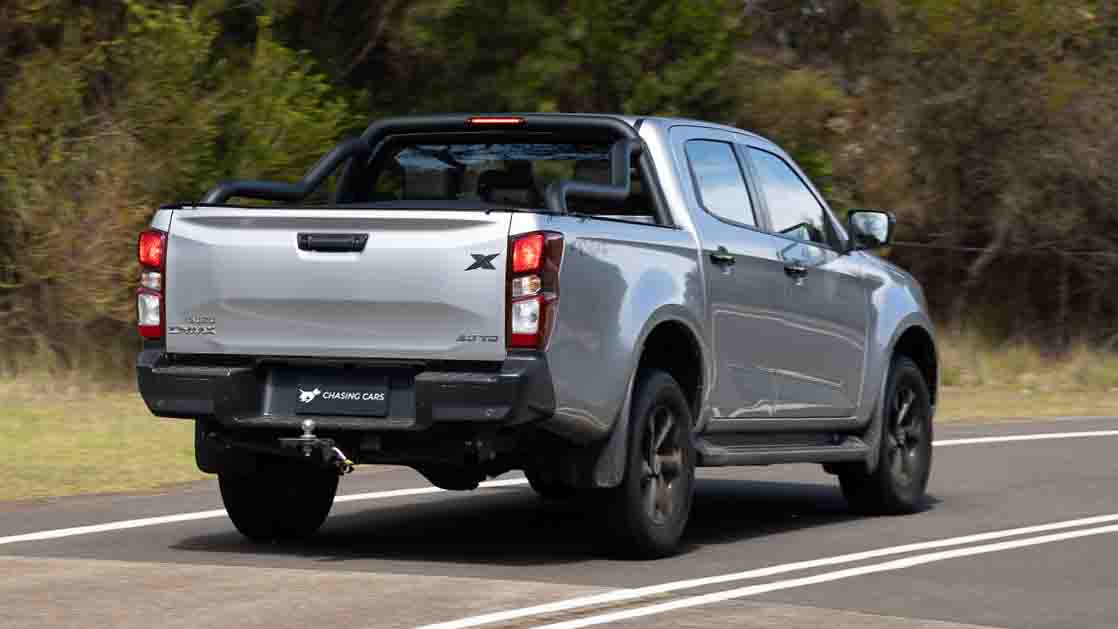
While the rubber the X-Rider fits is hardly properly mud-kicking spec, I was impressed how capable the X-Rider was straight out of the box with standard suspension, ground clearance and standard engine.
The interior of the X-Rider is unfortunately where things start to fall down.
Material choice inside the cabin is definitely more on the budget side of things. Some might call it rustic or durable, but the overarching theme here is that there’s an excess of hard, scratchy plastics around the place.
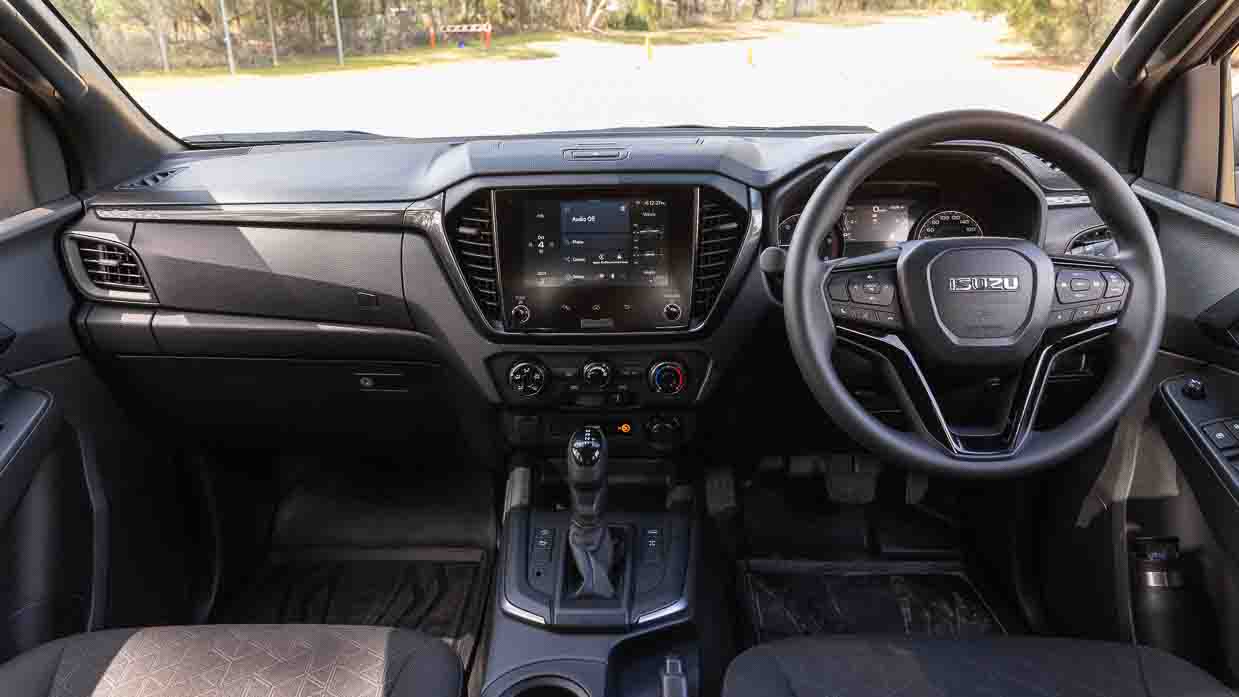
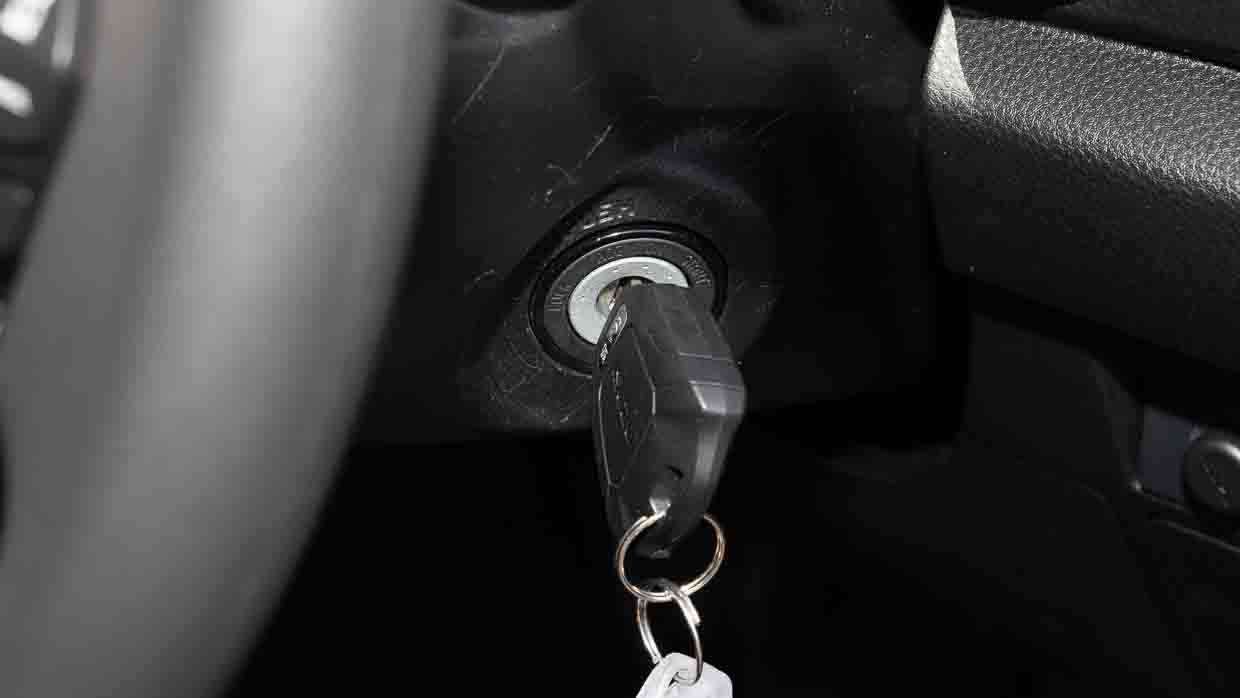
The entire dash, centre console, door trim pieces, and even the steering wheel are entirely plastic or vinyl. Those using the X-Rider largely for working at a job site aren’t going to complain about this so much, but that’s not really where this variant is primarily positioned.
Those expecting to buy into a ute experience that lays on creature comforts may well be disappointed.
For a touch over $64,000 driveaway, I did expect to see some rudimentary standard features such as a leather steering wheel and push-button engine start. This becomes a bit glaring considering the current rival in the ($60,990 driveaway) Nissan Navara Pro-4X has keyless start, a powered driver’s seat and a leather steering wheel, as it’s been specified since 2020.
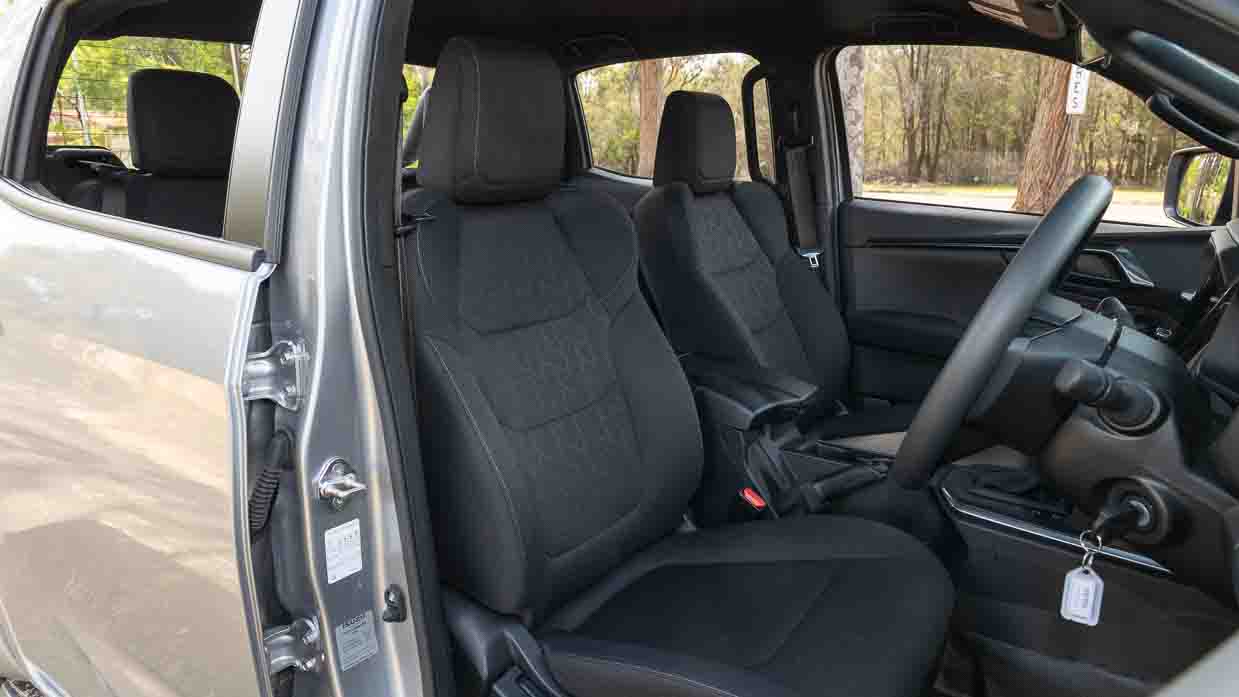
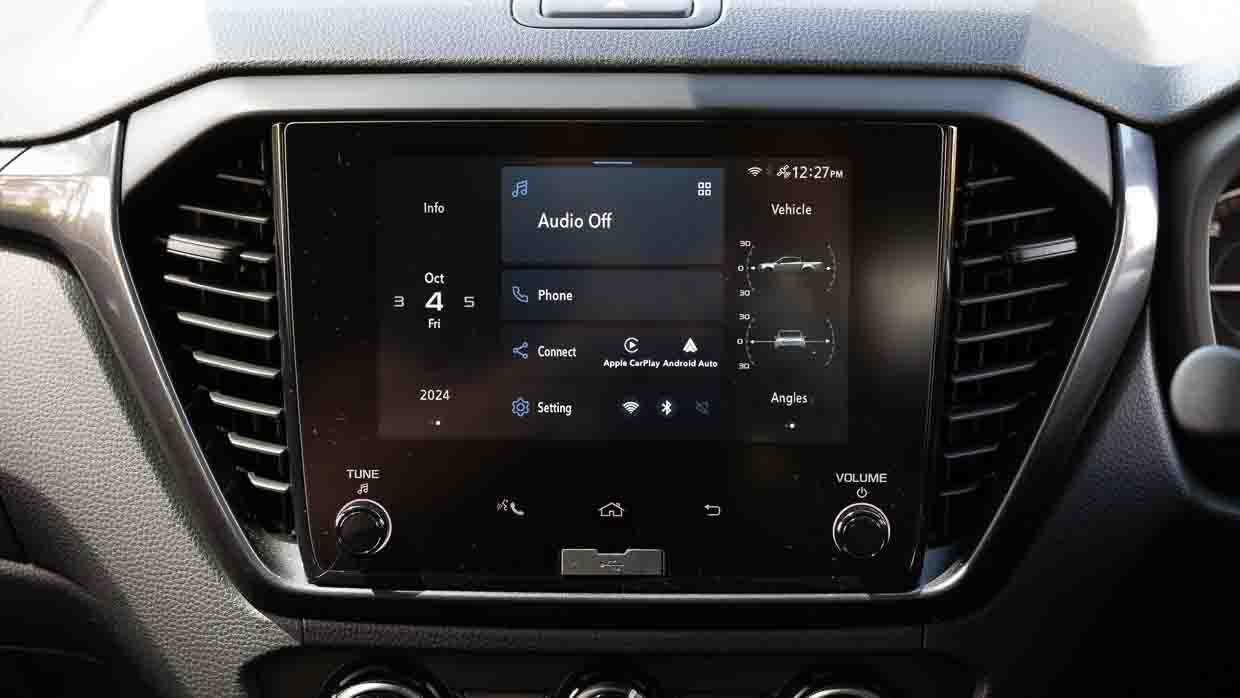
Regardless of interior materials, the Isuzu D-Max X-Rider is still a practical space, featuring two deep cup holders (a little too deep for a standard cup of coffee), two side cup holders, a single USB-C port, four-wheel-drive mode select, a front storage compartment, a sunglasses holder and a mobile phone tray (without wireless charging).
As for standard technologies, the X-Rider gets a 8.0-inch touchscreen that runs wireless versions of Apple CarPlay and Android Auto. However, I had a constant issue with the infotainment, with the software not wanting to connect to my Google Pixel phone either wired or wirelessly, which was very annoying. Rebooting my phone also did not do the trick.
The Isuzu’s updated infotainment is okay, but the screen itself is a little blurry and not the clearest on the market. The driver also gains a standard 4.2-inch multifunction cluster that has a few functions. The reversing camera also lacks the clarity of many of the Isuzu’s ute competitors.
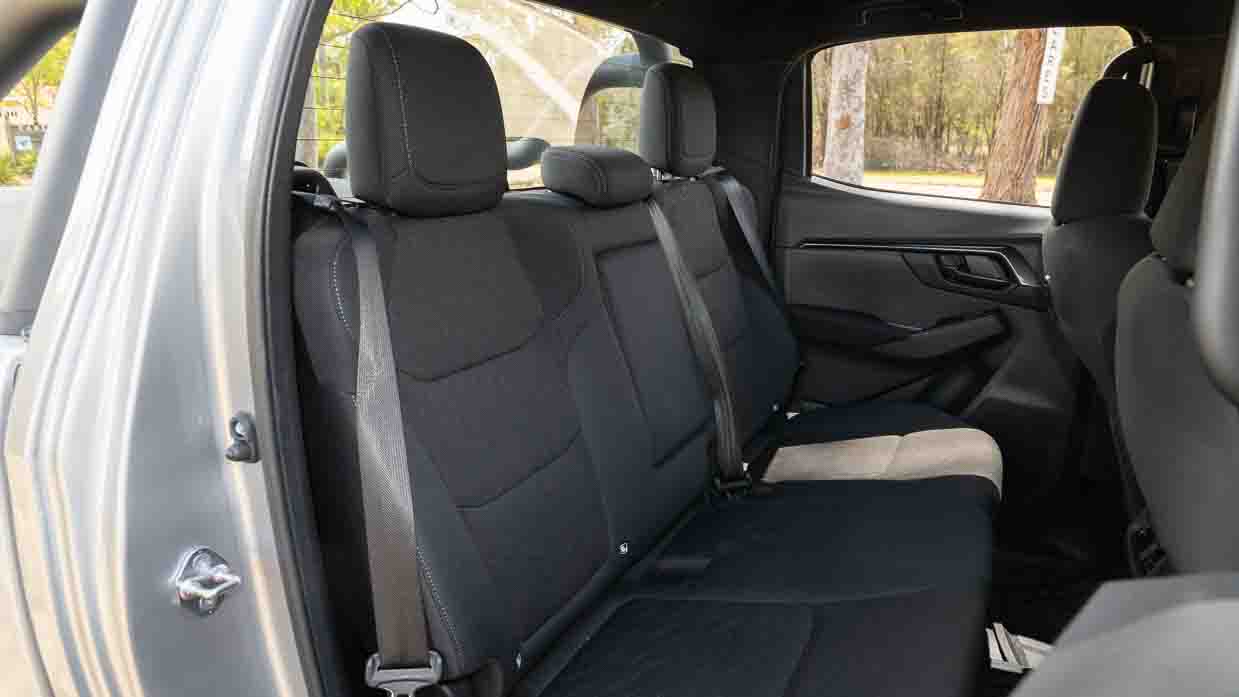
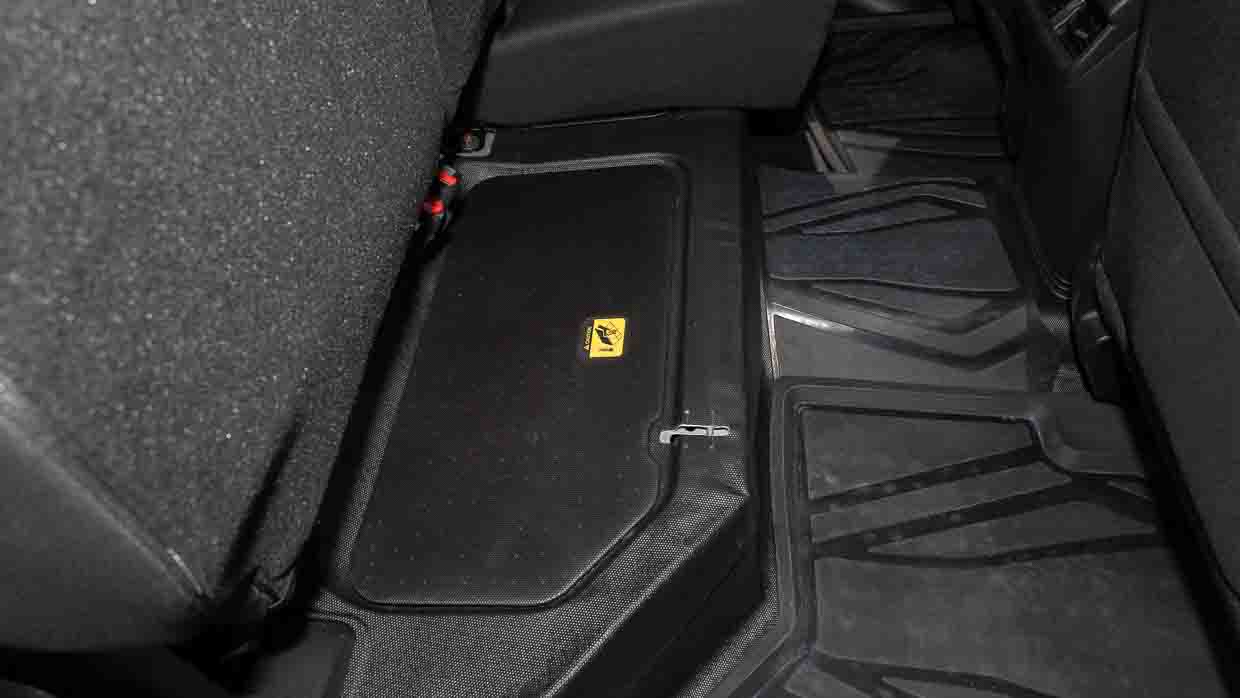
Strangely, unlike other D-Maxs I have driven recently, this particular X-Rider did not have a ‘distance-to-empty’ range indicator. Weird.
It’s pretty paired back for the second row occupants, too. It’s a little squishy for my 175cm frame, but would be totally okay for the kids. A USB-C port, rear air vents, magazine holders and a coat hook, along with a fold down armrest with two cup holders, also feature.
In the tray, the X-Rider measures in at 1495mm long by 1122mm between the wheel arches. A soft tonneau cover features as part of the X-Rider package, but you have to unclip it first before lowering the tailgate. Speaking of tailgate, the X-Rider features a damped, gas-strut assisted setup which makes things much easier for general operation.
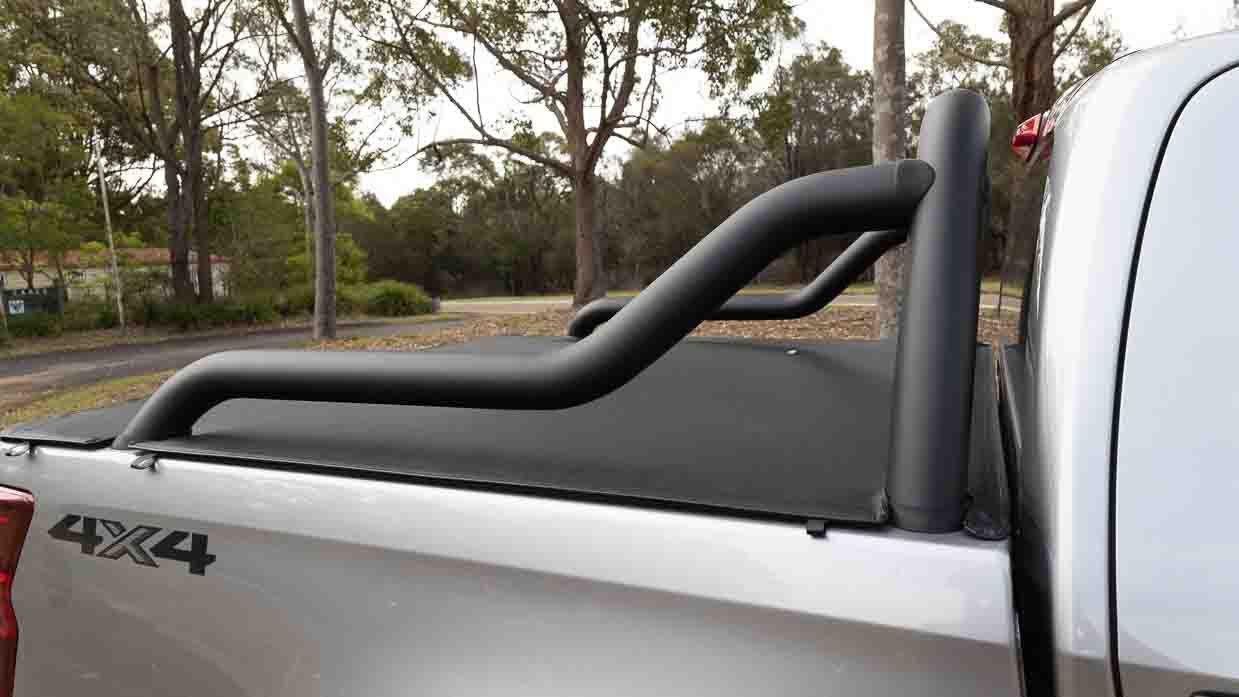
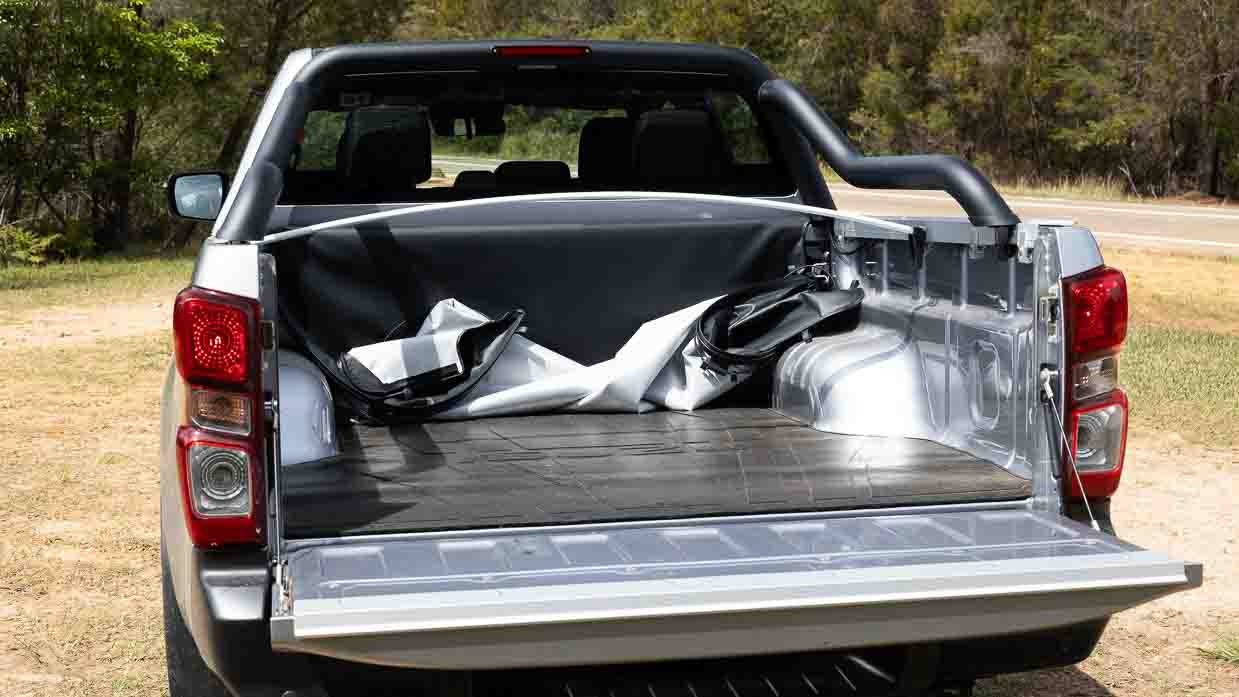
There’s a rubber matting but no tub liner in the tray. As for payload, the X-Rider can take up to 1045kg in the tray, which is more than the LS-U+’s 990kg and the X-Terrain’s 930kg payload.
Trailer sway control is standard across the Isuzu range and works to eliminate sway by braking individual wheels if the D-Max detects any form of sway from the trailer. Blind spot monitoring, rear cross traffic alert and rear cross traffic brake are automatically switched off when towing to avoid the vehicle detecting the trailer as an obstacle.
The current Isuzu D-Max was tested in 2022 by safety authority ANCAP where it received a five-star rating. The model scored highest in child occupant protection with a score of 89 percent, followed closely by an 86 percent score for adult occupant protection. Safety assist was a commendable 84 percent.
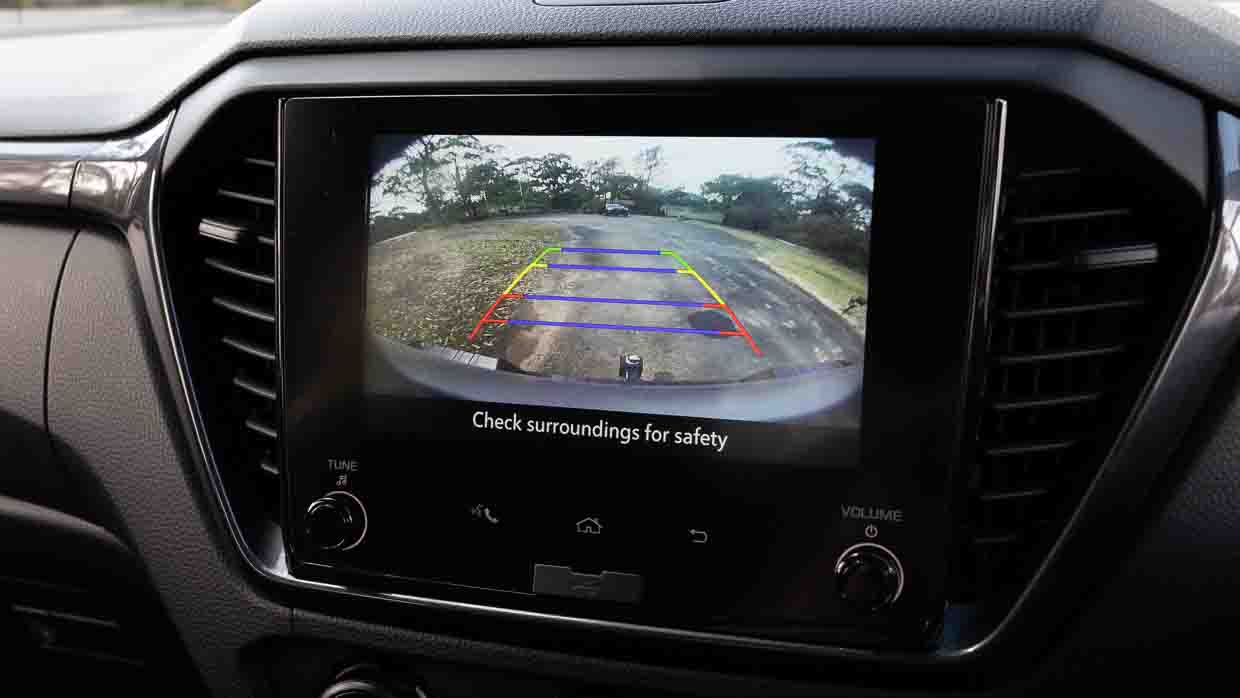
As standard, the D-Max X-Rider is very well equipped with active and passive safety systems and includes:
The D-Max for 2024 gained an important update to its driver assistance tuning, most notably the lane-keep assist. I first experienced this update in the refreshed D-Max X-Terrain and was very impressed with the delicate, gentle tuning and steering intervention.
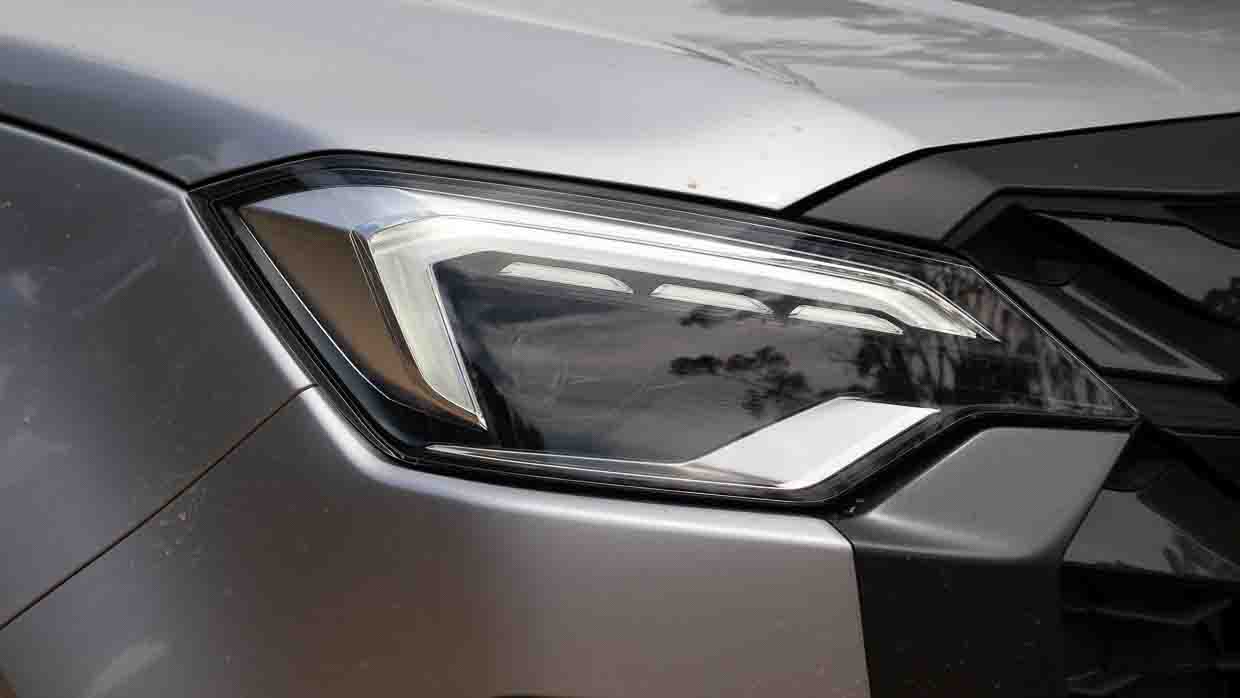
It’s the same story with the X-Rider. I very rarely get into a car and can just drive it without turning systems off, but I didn’t once need to turn off the lane-keeping assist in the X-Rider.
Isuzu seems to have adapted the D-Max systems well for real-world Australian conditions. However, the rear-cross traffic/reverse braking function needs a tweak, as it will haul the anchors on while reverse parallel parking for seemingly no appropriate reason.
All Isuzu vehicles sold in Australia have a six-year warranty, which is compelling, though it is capped at 150,000 kilometres.
For servicing, the X-Rider 3.0-litre will need to be serviced every 12 months or 15,000 kilometres, whichever occurs first. Servicing the D-Max will cost $2445 over a period of five years.
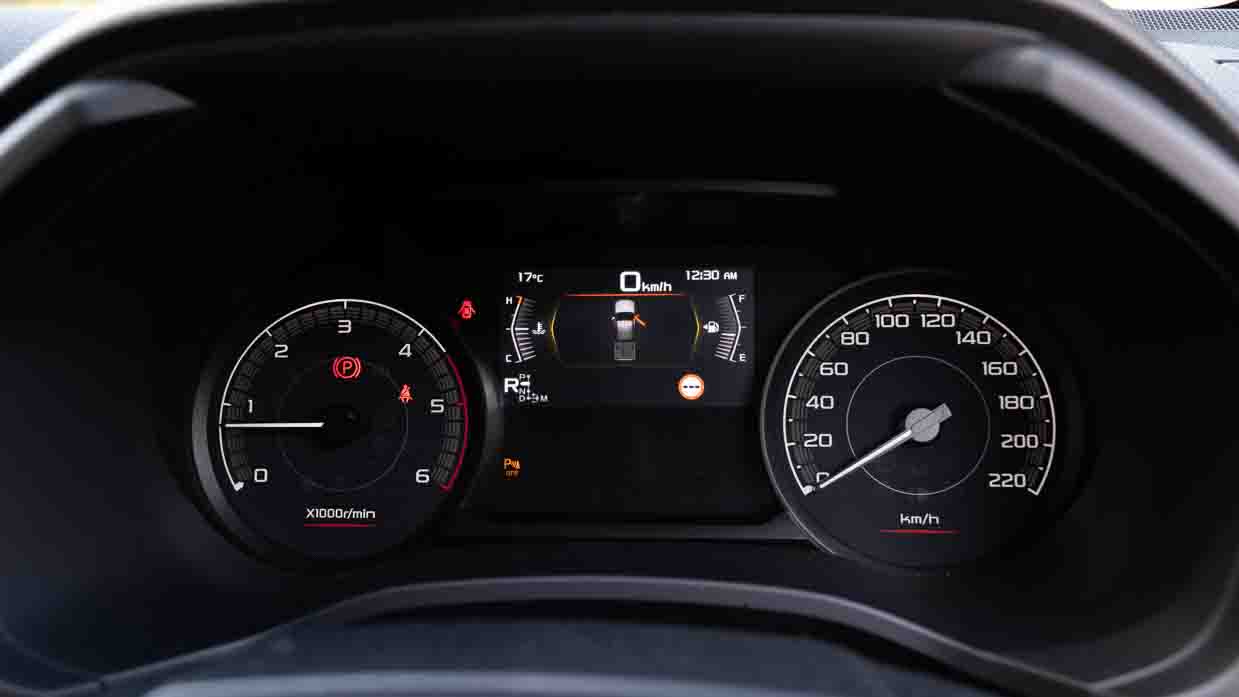
As for fuel efficiency, the X-Rider has an official combined fuel consumption of 8.0L/100km, however during our week of testing, we actually did a little better, averaging 7.8L/100km. At least for the on-road component. Mixing off-road, low-range driving, or towing, will have a fair impact on economy.
So is the X-Rider the perfect all-round ute in Australia in 2024?
For many Aussie buyers, the X-Rider will do most jobs well enough and then some. It’s a capable, strong workhorse that now looks the part thanks to some blacked-out bits and bobs. But when you take it away from the job site and up to the beach or your favourite off-roading tracks, the X-Rider prove capable right off the showroom floor.
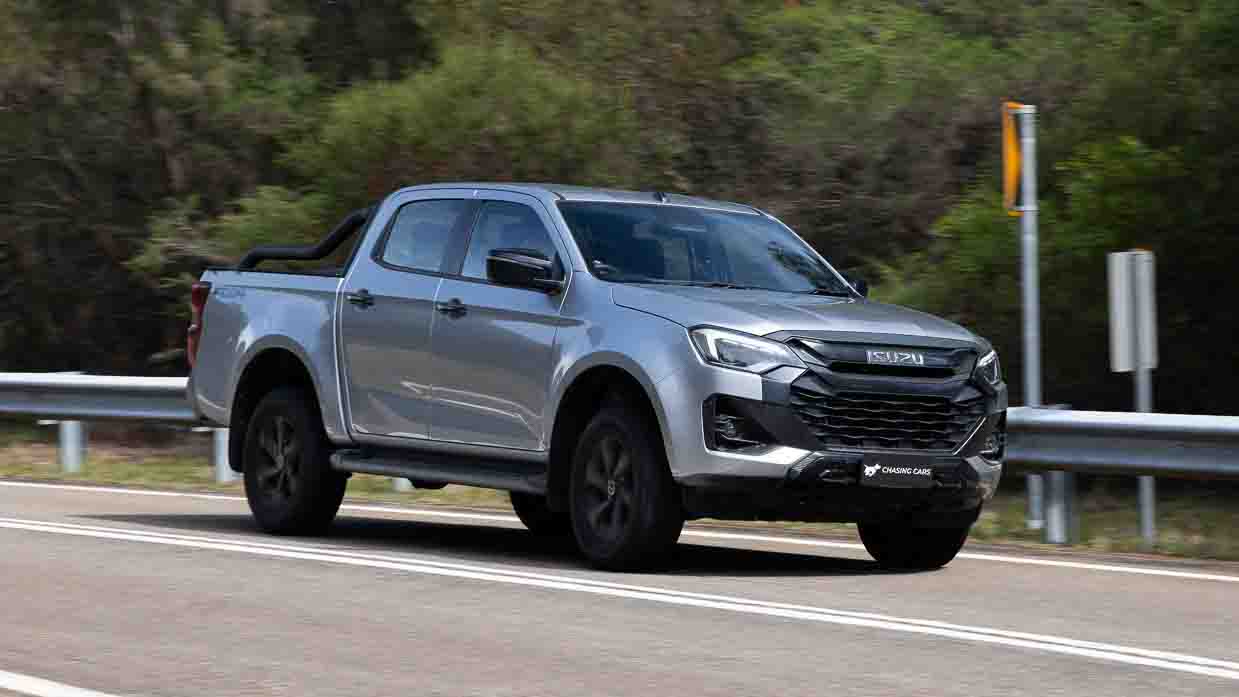
If city duties are primarily what you’re into, the X-Rider does ride well enough and certainly covers off safety with its impressive suite of active technologies. But it’s far from class leading in terms of around town pleasantries.
But is it really worth $64,000 driveaway?
I feel that the interior of the X-Rider is its biggest letdown. It feels incredibly budget conscious for this price point and lacks some key specification that should be standard for this kind of money.
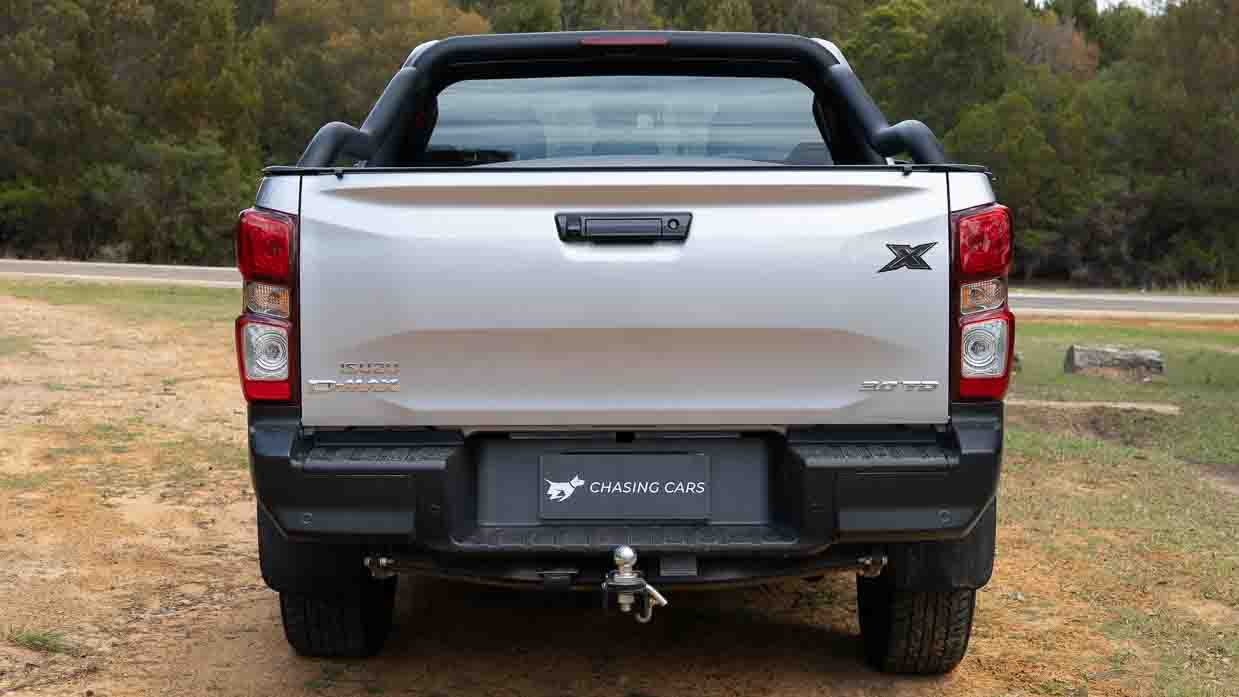
As is the case with X-Rider’s on-road manners, some rivals just do cabin presentations just that little bit better.
You could go up to the LS-U’s nicer package for more outlay, but that’s not the point. The X-Rider feels overpriced for what it is. It’s more a $55K car on road, rather than a $64K one.
At the end of the day, Isuzu’s big selling point is that responsive, strong 4JJ3 engine, its safety and its ability to pull a decent load. And it’s also a great to drive when the going gets rough.
Key specs (as tested)
About Chasing cars
Chasing Cars reviews are 100% independent.
Because we are powered by Budget Direct Insurance, we don’t receive advertising or sales revenue from car manufacturers.
We’re truly independent – giving you Australia’s best car reviews.
The estimate provided does not take into account your personal circumstances but is intended to give a general indication of the cost of insurance, in order to obtain a complete quote, please visit www.budgetdirect.com.au. Estimate includes 15%^ online discount.
^Conditions Apply
Budget Direct Insurance arranged by Auto & General Services Pty Ltd ACN 003 617 909(AGS) AFSL 241 411, for and on behalf of the insurer, Auto & General Insurance Company Limited(ABN 42 111 586 353, AFSL 285 571).Because we don’t know your financial needs, we can’t advise you if this insurance will suit you. You should consider your needs and the Product Disclosure Statement before making a decision to buy insurance. Terms and conditions apply.
Indicative quote based on assumptions including postcode , 40 year old male with no offences, licence suspensions or claims in the last 5 years, a NCD Rating 1 and no younger drivers listed. White car, driven up to 10,000kms a year, unfinanced, with no modifications, factory options and/or non-standard accessories, private use only and garaged at night.
^Online Discounts Terms & Conditions
1. Discounts apply to the premium paid for a new Budget Direct Gold Comprehensive Car Insurance, Third Party Property Only or Third Party Property, Fire & Theft Insurance policy initiated online on or after 29 March 2017. Discounts do not apply to optional Roadside Assistance.
2. Discounts do not apply to any renewal offer of insurance.
3. Discounts only apply to the insurance portion of the premium. Discounts are applied before government charges, taxes, levies and fees, including instalment processing fees (as applicable). The full extent of discounts may therefore be impacted.
4. We reserve the right to change the offer without notice.